Advancements in space technologies in the last decades have laid the basis for a new era for space-based sensing exploiting Synthetic Aperture Radar (SAR) imaging, spurred on by the potential to deploy constellations of micro-satellites equipped with antennae possessing significant gain and steering capabilities. Long dwell-time products with fine spatial resolution enable the extraction of micro-Doppler information from targets in the scene, paving the way for several novel downstream applications.
The micro-Doppler signature is the ensemble of frequency modulations, generated by the small-scale motions of an object and observed in a radar signal. Such signature is specific to a target’s motion and features and thus can provide valuable insight into its nature and state.
The EO4Security Micro-Doppler project has pioneered the use of micro-Doppler techniques applied to spaceborne SAR, demonstrating its capabilities and investigating innovative algorithms and application domains.
Advancements in micro-Doppler processing
Fine-resolution SAR systems, combined with long dwells, allow the development of more advanced processing techniques, trading spatial resolution for velocity information and integrating micro-motion frequencies over longer periods. Exploiting these characteristics, the project has developed novel algorithmic solutions such as:
- Modified back-projection algorithm for micro-Doppler extraction.
- A new family of approaches based on phase exploitation has been developed and validated on shakers, buildings and vehicles.
- Integrated Spatially Variant Apodization (SVA) and time-frequency analysis for maritime targets characterisation.
- Scale-invariant Coherent Change Detection (CCD) for single-pass micro-Doppler targets detection.
Such innovative algorithms have been tested and validated in various use cases, showing the disruptive potential of micro-Doppler extraction and analysis.
Structural health monitoring
The potential of the techniques developed to extract natural vibrational modes of buildings and bridges has been demonstrated for infrastructure structural health monitoring and natural disaster damage assessment.
For this challenge, existing algorithms, such as Pixel Tracking, and novel approaches, such as DPC and SPA, have been applied to several structures, including high-rise buildings, bridges and stadiums.
The results show agreement between in-situ measurements and the vibrational modes extracted from SAR.
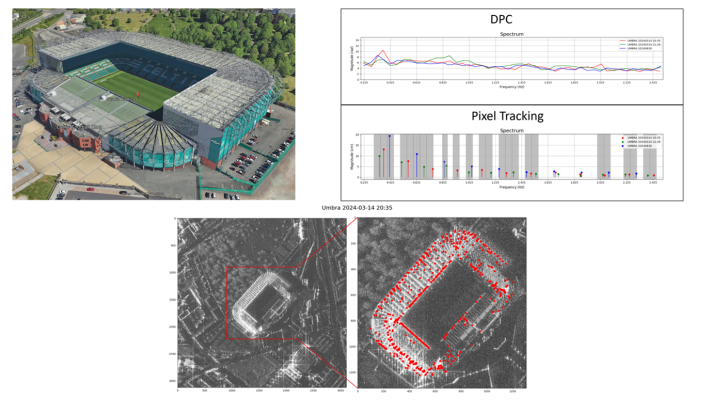
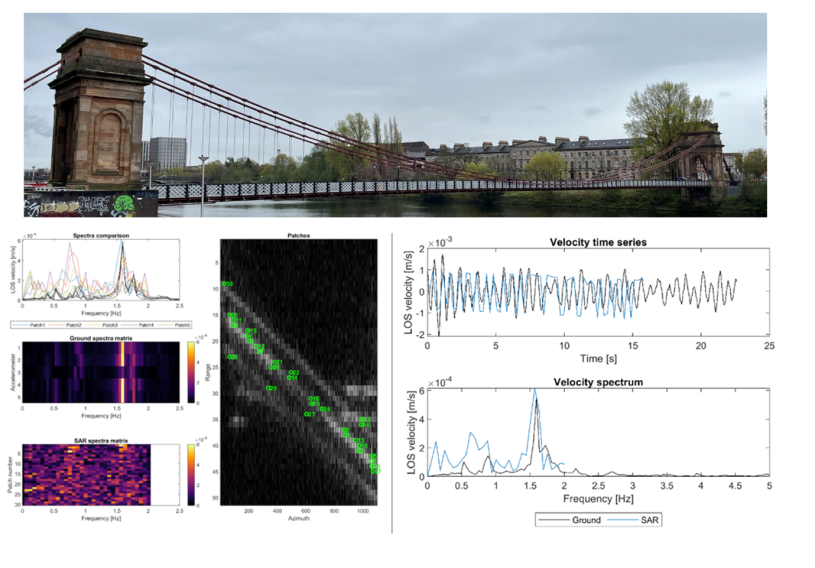
Advanced maritime surveillance
In the maritime domain, it has been demonstrated that micro-motion information extracted from SAR data, using the SVA algorithm combined with time-frequency analysis, can significantly enhance the characterisation of maritime targets. This additional information captures subtle motion, such as vibrating patterns induced by the target’s engine and propellers, as well as rotating navigation radar antennae.
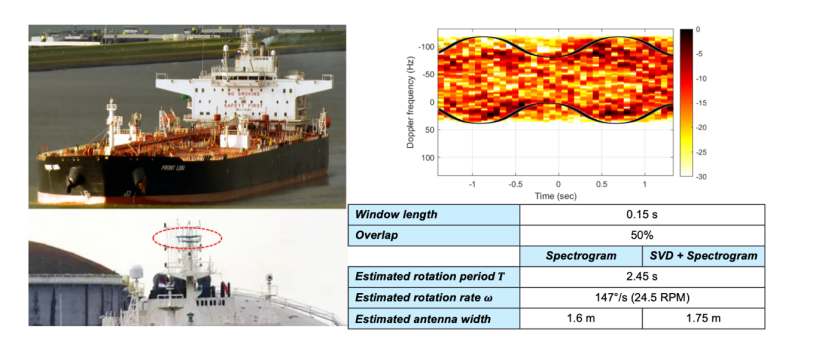
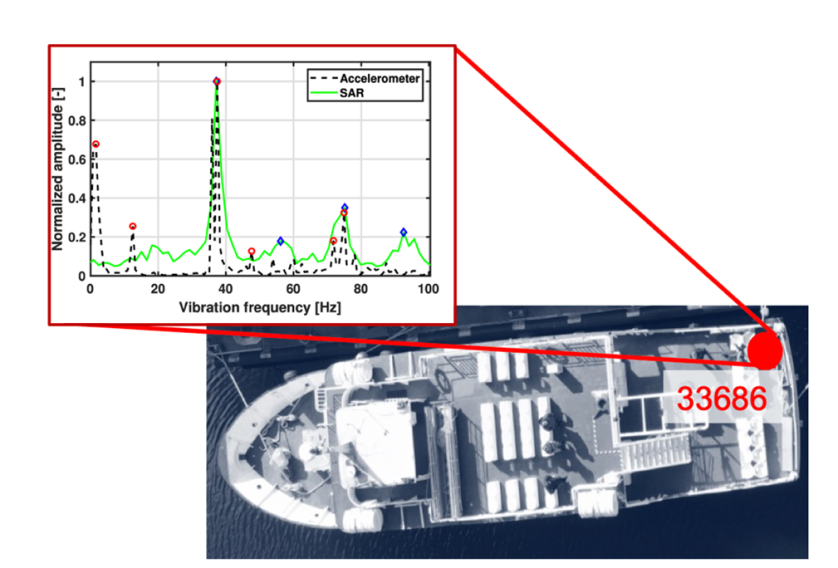
Detection of targets with micro-motions
The ability to quickly and accurately locate micro-Doppler signals in SAR data is essential for filtering targets before applying advanced processing algorithms that extract their micro-Doppler characteristics. This initial filtering step helps eliminate uninteresting targets and supports the detection of operational industrial plants, underground drilling activities, and dim targets.
This capability was successfully demonstrated on specific targets using the scale-invariant CCD approach applied to TerraSAR-X and Umbra data, addressing a notable gap in the current state of the art.
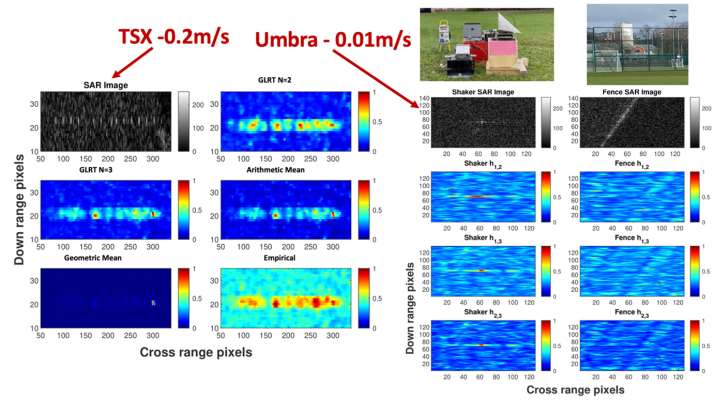
Future directions and expected impact
Future work will focus on further validation within the identified applications domains and exploring the potential benefits of advanced imaging modes, such as bistatic SAR. This will increase the applicability and impact of these techniques.
On the infrastructure monitoring side, specific efforts will include integrating digital twins to extract natural vibrational modes of buildings of interest. The extraction process will be enhanced, and the analysis of historical data will allow deriving trends and analysing changes in vibrational modes.
In the maritime domain, the team is already investigating the integration of SAR-based measurements with underwater acoustic sensing for advanced Underwater Radiated Noise modelling and multi-modal maritime detection strategies.
Finally, the ability to detect targets within SAR scenes paves the way for a range of new applications. These include assessing the operational status of industrial plants, detecting underground drilling activities and supporting search and rescue missions.
Overall, micro-Doppler techniques applied to SAR have the potential to significantly advance capabilities in security and resilience. They offer valuable decision-support tools for both government stakeholders and the EO industry, helping to shape a new generation of EO products.
Featured image : TerraSAR-X image over Glasgow. Courtesy of Airbus

